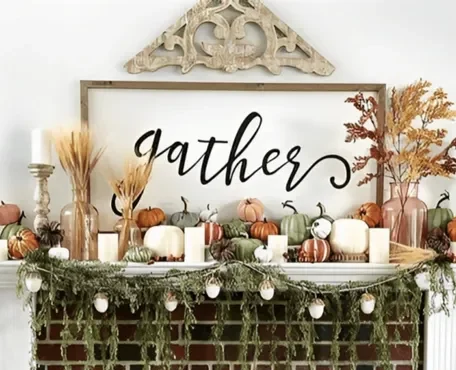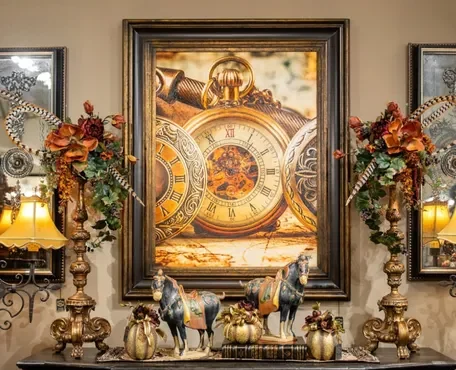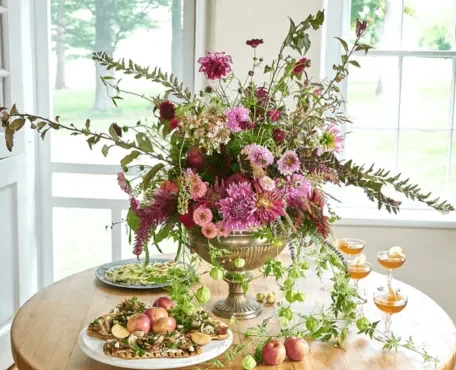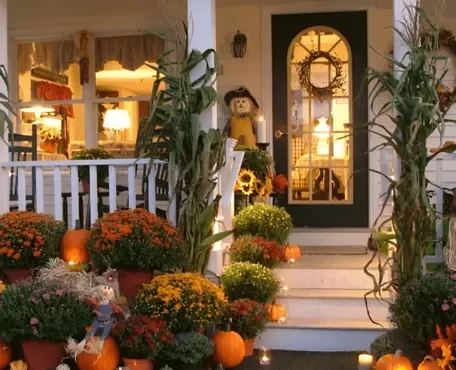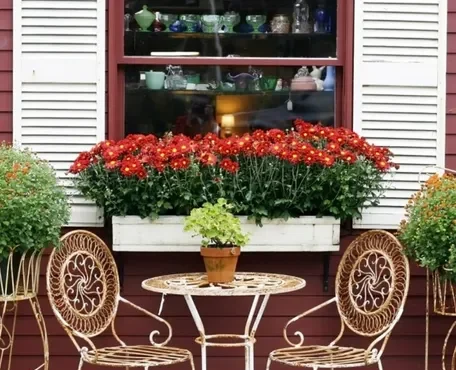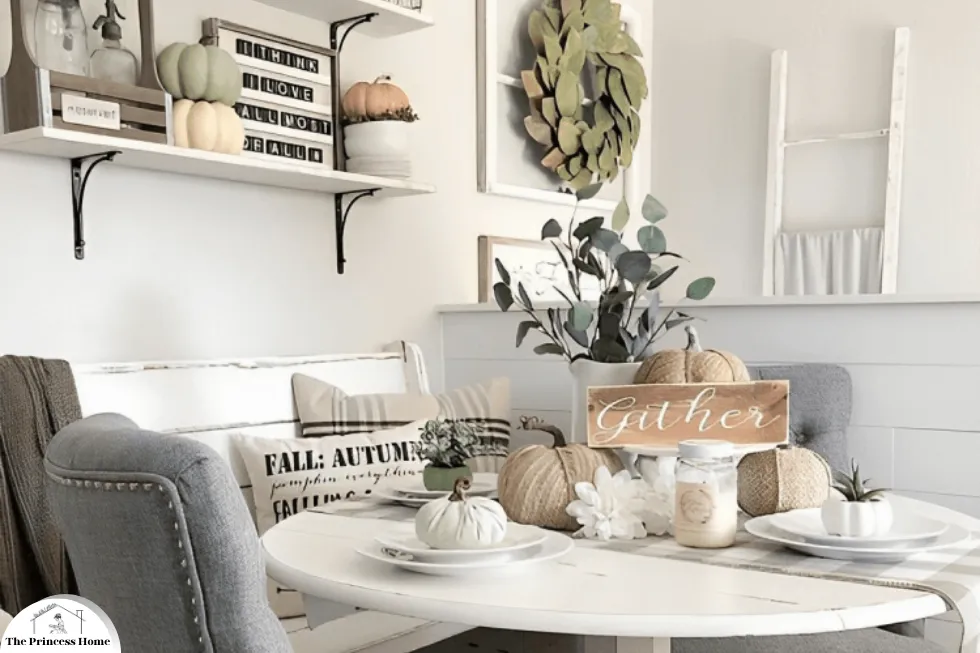
The classic farmhouse is an enduring symbol of rural charm and simplicity. With its timeless design and rustic allure, this architectural icon has captured the hearts of homeowners, architects, and enthusiasts alike for generations. In this article, we’ll delve into the art of decorating your home with neutral decor, turning it into a sanctuary of seasonal beauty and comfort.
Home Tour: The Charming Classic Farmhouse A Timeless Fall Icon
If you’re passionate about home decor, you’ll love our upcoming home tour that explores the charming details of an elegant home decor. This home tour will guide you through beautifully styled rooms, providing endless inspiration for your own decorating projects.
I believe we could all benefit from simple yet elegant methods to maintain the attractiveness of our homes during our indoor stays. I invite you to accompany me on this journey, and don’t forget to explore the other effortless spring suggestions. If you’re seeking farmhouse inspiration for your entire home, be sure to take a look at Shanna’s classy farmhouse decor tour from simplyminedesigns I hope you enjoy this home tour.
In this article, we will explore the essence of the charming classic farmhouse, delving into its history, architectural features, interior design elements, and its enduring appeal in the modern world.
A Brief History
The classic farmhouse deeply embeds its roots in American history. Originating in the late 18th century, settlers initially built these humble structures as practical homes for farming families. They designed them to meet the specific needs of agrarian life, emphasizing functionality and durability.
1.*Architectural Features
1.Gabled Roofs:
One of the most distinguishing features of classic farmhouses is their steeply pitched gabled roofs. This design allowed for efficient rainwater runoff and provided extra attic space for storage or additional rooms.
2.Wraparound Porches:
A hallmark of farmhouse architecture, the wraparound porch served as a gathering place for family and friends. It offered shade in the scorching summer months and protection from the elements during inclement weather.
3.Symmetrical Design:
Classic farmhouses typically have a symmetrical layout with a central front door flanked by evenly spaced windows. This balanced arrangement reflects the practicality and simplicity that define this style.
4.Board-and-Batten Siding:
Traditional farmhouses often featured board-and-batten siding, which consists of wide wooden boards with narrower wooden strips (battens) covering the seams. This method provided structural stability and insulation.
5.Dormer Windows:
To maximize interior space and light, many classic farmhouses incorporated dormer windows into their design. These protruding windows added character and functionality to the attic space.
2.*Interior Design Elements
1.Wide Plank Wood Floors:
Farmhouses embraced the use of wide plank wood flooring, which not only added to their rustic charm but also provided durability in high-traffic areas.
2.Exposed Beams:
Exposed wooden beams in the ceiling and walls added a sense of authenticity and warmth to the farmhouse interior.
3.Stone Fireplaces:
A central stone fireplace served as the focal point of the farmhouse’s living area, providing both heat and a cozy ambiance during cold winter nights.
4.Functional Kitchens:
Farmhouses featured practical kitchens with large, sturdy work surfaces and ample storage space. The farmhouse kitchen served as the heart of the home, where residents prepared and shared meals.
3.*Enduring Appeal
While the classic farmhouse was born out of necessity, its enduring appeal lies in its ability to blend functionality with timeless aesthetics. In the modern world, these homes continue to capture the imagination of homeowners and architects for several reasons:
1.Nostalgia:
Classic farmhouses evoke a sense of nostalgia for a simpler time. Their design harks back to an era when life was less complicated and more connected to the land.
2.Versatility:
Owners can adapt farmhouses, offering the potential for both restoration and modernization. They can update them with modern amenities while preserving their historic character.
3.Connection to Nature:
With their spacious porches and large windows, farmhouses seamlessly connect the interior to the surrounding landscape, making them ideal for those seeking a closer connection to nature.
4.Iconic Aesthetic:
The classic farmhouse aesthetic remains popular in contemporary interior design, making it a sought-after choice for homeowners looking for a blend of rustic and timeless elegance.
Conclusion
The charming classic farmhouse stands as a testament to the enduring appeal of rural architecture and design. With its distinctive features and historical significance, it continues to capture the hearts of those who appreciate its timeless beauty. Whether preserved as a historic gem or reimagined for modern living, the classic farmhouse remains a symbol of simplicity, functionality, and enduring elegance in the world of architecture and design.
Here are some frequently asked questions about the charming classic farmhouse
1. What defines a classic farmhouse in terms of architectural features?
The defining characteristics of a classic farmhouse usually encompass architectural elements such as steeply sloped gabled roofs, wraparound porches, a symmetrical layout featuring a central front entrance, board-and-batten siding, dormer windows, and frequently, a striking stone fireplace.
2. What is the history of classic farmhouses in the United States?
Classic farmhouses in the United States have their origins in the late 18th century. They were originally built as practical homes for farming families, designed to meet the specific needs of agrarian life, with an emphasis on functionality and durability.
3. What are the key interior design elements of a classic farmhouse?
Key interior design elements of a classic farmhouse include wide plank wood floors, exposed wooden beams, stone fireplaces, and practical, functional kitchens. These elements contribute to the cozy and rustic ambiance that defines classic farmhouses.
4. Are classic farmhouses still relevant and popular in modern times?
Yes, classic farmhouses continue to be relevant and popular in modern times. Their enduring appeal lies in their ability to blend functionality with timeless aesthetics. They are often sought after for their nostalgic charm, versatility, and their ability to connect the interior to nature.
5. Can classic farmhouses be renovated or modernized while preserving their historic character?
Yes, classic farmhouses can be renovated or modernized while preserving their historic character. Many homeowners and architects choose to update these homes with modern amenities while still respecting and preserving their original architectural features and charm.
6. What are some ways to connect a classic farmhouse to its natural surroundings?
To establish a strong link with their natural environment, classic farmhouses can utilize expansive windows for picturesque vistas, construct roomy porches or outdoor living spaces, and employ landscaping to amplify their connection to nature.
7. Is the classic farmhouse aesthetic popular in contemporary interior design?
Yes, the classic farmhouse aesthetic remains popular in contemporary interior design. Many people appreciate the blend of rustic and timeless elegance that classic farmhouses offer, making them a sought-after choice for interior decor.
8. Are classic farmhouses found only in rural areas, or can they be adapted for urban or suburban living?
While classic farmhouses are often associated with rural areas, they can be adapted for urban or suburban living. Architects and homeowners have successfully incorporated classic farmhouse elements into homes in various settings, allowing people to enjoy their timeless charm regardless of location.
9. What are some tips for maintaining and preserving a classic farmhouse’s historic character?
To maintain and preserve a classic farmhouse’s historic character, it’s essential to use period-appropriate materials in any renovations, restore original features when possible, and conduct regular maintenance to prevent deterioration. Consulting with historic preservation experts can also be beneficial.
10. Are there any specific regions in the United States known for classic farmhouse architecture?
Classic farmhouse design is prevalent across the United States, with a distinct association with rural regions in the Midwest, New England, and the Southern states. However, variations of farmhouse styles exist across the country, influenced by regional traditions and materials.


